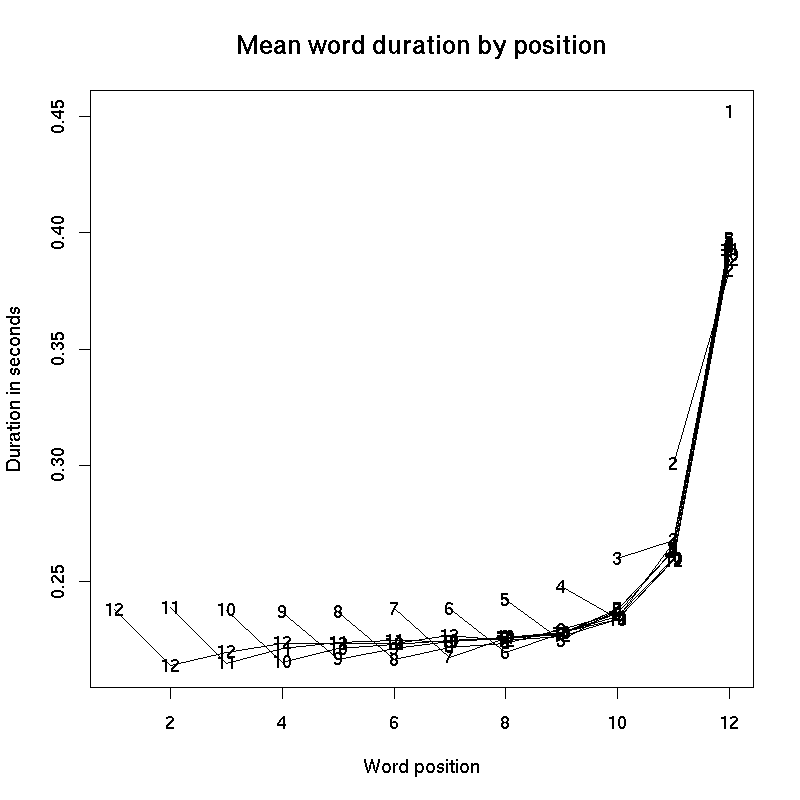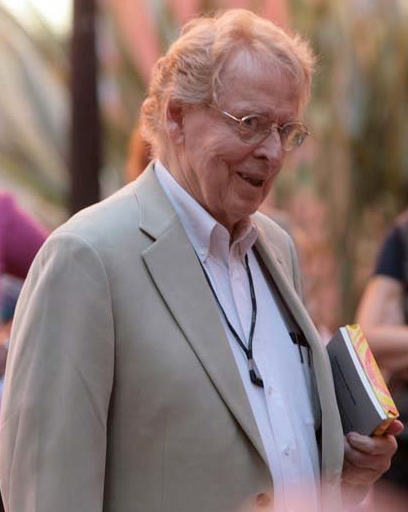The shape of a spoken phrase in Mandarin
A few years ago, with Jiahong Yuan and Chris Cieri, I took a look at variation in English word duration by phrasal position, using data from the Switchboard conversational-speech corpus ("The shape of a spoken phrase", LLOG 4/12/2006; Jiahong Yuan, Mark Liberman, and Chris Cieri, "Towards an Integrated Understanding of Speaking Rate in Conversation", InterSpeech 2006). As is often the case for simple-minded analysis of large speech datasets, this exercise showed a remarkably consistent pattern of variation — the plot below shows mean duration by position for phrases from 1 to 12 words long:
The Mandarin Broadcast News collection discussed in a recent post ("Consonant effects on F0 in Chinese", 6/12/2014) lends itself to a similar analysis of phrase-position effects on speech timing. So for this morning's Breakfast Experiment™, I ran a couple of scripts to take a first look.
Read the rest of this entry »




